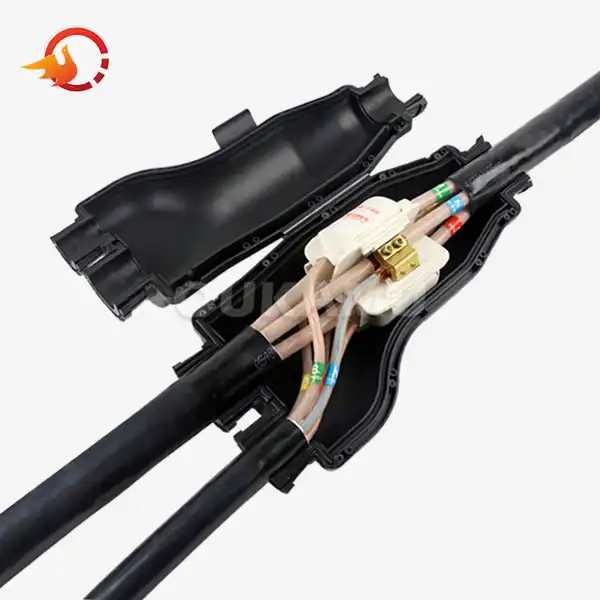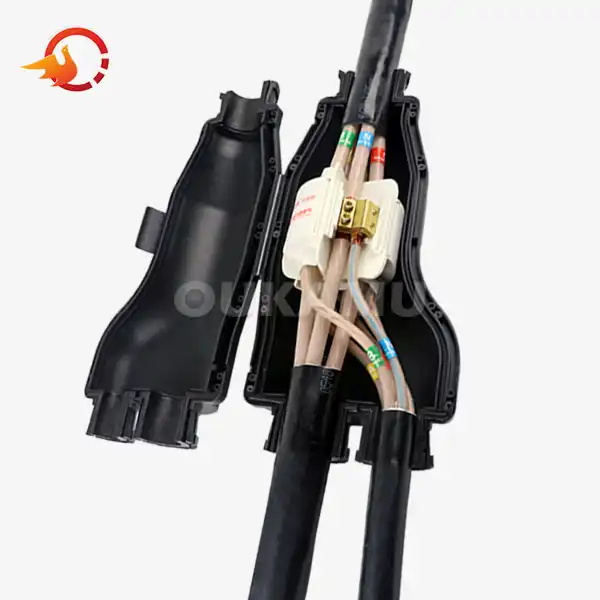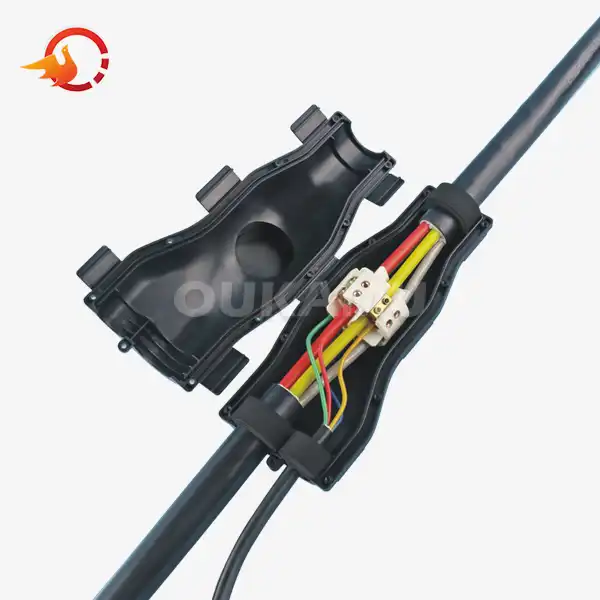What is the difference between LV and HV?
 2025-09-10 15:20:20
View:389
2025-09-10 15:20:20
View:389In the world of electrical engineering, understanding the distinction between Low Voltage (LV) and High Voltage (HV) systems is crucial. These two categories of voltage systems play vital roles in power distribution and various industrial applications. This comprehensive guide will delve into the key differences between LV and HV, their applications, and the advantages and challenges associated with each system.
Key Differences Between Low and High Voltage Systems
The primary distinction between LV and HV systems lies in their voltage levels. Low Voltage systems typically operate at voltages up to 1000V AC or 1500V DC. On the other hand, High Voltage systems operate at voltages exceeding these thresholds. Let's explore some key differences:
Voltage Ranges
Low Voltage (LV) systems: - AC: Up to 1000V - DC: Up to 1500V
High Voltage (HV) systems: - AC: Above 1000V - DC: Above 1500V
Safety Considerations
LV systems generally pose lower safety risks compared to HV systems. However, this doesn't mean LV systems are entirely safe. Proper safety measures are still essential when working with LV equipment. HV systems require more stringent safety protocols, specialized equipment, and highly trained personnel due to the increased dangers associated with higher voltages.
Insulation Requirements
HV systems demand more robust insulation to prevent electrical breakdown and arcing. The insulation materials used in HV applications must withstand higher electric field strengths. LV systems, while still requiring adequate insulation, have less stringent requirements due to the lower voltages involved.
Power Transmission Efficiency
HV systems are more efficient for long-distance power transmission. The higher voltage allows for lower current, which reduces power losses in transmission lines. LV systems are better suited for local distribution and within buildings or facilities where distances are shorter.
Equipment Size and Cost
HV equipment tends to be larger and more expensive due to the need for enhanced insulation and safety features. Low Voltage equipment is generally more compact and cost-effective, making it suitable for a wide range of applications in residential, commercial, and light industrial settings.
Applications of High and Low Voltage in Industries
Both LV and HV systems have their place in various industries and applications. Let's explore where each system shines:
Low Voltage Applications
1. Residential and Commercial Buildings: LV systems are prevalent in homes, offices, and retail spaces for lighting, appliances, and general power needs.
2. Light Industrial Equipment: Many machines and tools in small to medium-sized manufacturing facilities operate on LV power.
3. Automotive Systems: Cars and other vehicles primarily use LV systems for their electrical components.
4. Renewable Energy Systems: Small-scale solar and wind power installations often utilize LV systems for local power distribution.
5. Control Systems: Many industrial control systems and PLCs (Programmable Logic Controllers) operate on LV power.
High Voltage Applications
1. Power Generation: Large power plants generate electricity at high voltages for efficient transmission.
2. Long-Distance Transmission: HV lines are used to transmit power over vast distances with minimal losses.
3. Heavy Industry: Steel mills, large manufacturing plants, and other heavy industrial facilities often require HV power for their energy-intensive processes.
4. Railway Systems: Electric trains and subway systems frequently utilize HV power for propulsion.
5. X-ray Machines and Particle Accelerators: These specialized scientific instruments require HV power for their operation.
OUKAMU's Role in LV and HV Applications
OUKAMU, a leading manufacturer of cable connection products, offers innovative solutions for both LV and HV applications. Their cable jointing technology has been successfully implemented in various projects, including the Huanggang Xuefu City residential area. OUKAMU's products ensure safe and reliable connections in both Low Voltage and HV systems, contributing to improved electrical safety and efficiency across different industries.
Advantages and Challenges of LV vs HV Systems
Both LV and HV systems have their own set of advantages and challenges. Understanding these can help in choosing the right system for specific applications.
Advantages of LV Systems
1. Safety: Lower voltages pose less risk to human life and property.
2. Cost-effectiveness: LV equipment is generally less expensive to manufacture, install, and maintain.
3. Accessibility: LV systems are more accessible for maintenance and troubleshooting by a broader range of technicians.
4. Flexibility: LV systems can be easily modified or expanded to accommodate changing needs in residential or commercial settings.
5. Compatibility: Most consumer and light industrial equipment is designed to operate on LV power.
Challenges of LV Systems
1. Limited Power Capacity: Low Voltage systems have constraints on the amount of power they can deliver over long distances.
2. Higher Current: Lower voltages require higher currents to deliver the same power, leading to increased heat generation and potential voltage drops.
3. Voltage Regulation: Maintaining consistent voltage levels can be challenging in LV systems, especially in larger installations.
Advantages of HV Systems
1. Efficient Power Transmission: HV systems can transmit large amounts of power over long distances with minimal losses.
2. Reduced Cable Size: Higher voltages allow for smaller conductor sizes for the same power capacity, reducing material costs.
3. Better Voltage Regulation: HV systems generally offer improved voltage stability over long distances.
4. Suitability for High-Power Applications: HV systems are essential for powering large industrial equipment and processes.
Challenges of HV Systems
1. Safety Concerns: HV systems pose greater risks to human life and require stringent safety measures.
2. Cost: HV equipment and infrastructure are more expensive to manufacture, install, and maintain.
3. Specialized Expertise: Working with HV systems requires highly trained personnel and specialized equipment.
4. Environmental Impact: HV transmission lines can have a significant visual and environmental impact.
OUKAMU's Solutions for LV and HV Challenges
OUKAMU addresses many of these challenges through its innovative cable jointing technology. For LV systems, OUKAMU's products offer improved safety, efficiency, and ease of installation. In HV applications, OUKAMU's solutions provide reliable connections that can withstand the demanding requirements of high-voltage environments. The company's commitment to research and development ensures that their products continue to evolve to meet the changing needs of both LV and HV markets.
Conclusion
The choice between LV and HV systems depends on the specific requirements of each application. While Low Voltage systems dominate in residential and light commercial settings, HV systems are indispensable for power transmission and heavy industrial applications. Both systems have their unique advantages and challenges, and understanding these differences is crucial for electrical engineers, facility managers, and anyone involved in power distribution projects.
As technology advances, the line between LV and HV systems continues to blur, with medium voltage systems bridging the gap in many applications. Companies like OUKAMU play a vital role in this evolving landscape by providing innovative solutions that enhance the safety, reliability, and efficiency of both LV and HV systems.
For more information about cable connection products and solutions for both LV and HV applications, feel free to contact OUKAMU at info@okmbranchcable.com. Their expertise in cable jointing technology can help you navigate the complexities of voltage systems and find the best solution for your specific needs.
FAQ
Q1: What is the main difference between LV and HV systems?
A1: The primary difference is the voltage level. LV systems operate up to 1000V AC or 1500V DC, while HV systems exceed these levels.
Q2: Are LV systems always safer than HV systems?
A2: While LV systems generally pose lower risks, they still require proper safety measures. HV systems demand more stringent safety protocols due to the higher voltages involved.
Q3: Why are HV systems used for long-distance power transmission?
A3: HV systems allow for more efficient power transmission over long distances with lower current and reduced power losses.
Q4: Can OUKAMU products be used in both LV and HV applications?
A4: Yes, OUKAMU offers solutions for both LV and HV systems, ensuring safe and reliable connections across various voltage ranges.
Q5: How do I choose between LV and HV for my project?
A5: The choice depends on factors like power requirements, transmission distance, and application type. Consulting with experts like OUKAMU can help determine the best solution for your specific needs.
References
1. Johnson, A. R. (2019). High Voltage Engineering and Testing. 3rd Edition. IET.
2. Smith, B. C. (2020). Low Voltage Wiring: Security/Fire Alarm Systems. McGraw-Hill Education.
3. Thompson, L. M. (2018). Handbook of Electrical Design Details. McGraw-Hill Education.
4. Davis, R. K. (2021). Power System Analysis and Design. 6th Edition. Cengage Learning.
5. Wilson, E. J. (2017). An Introduction to Electrical Power Systems Technology. Pearson.















